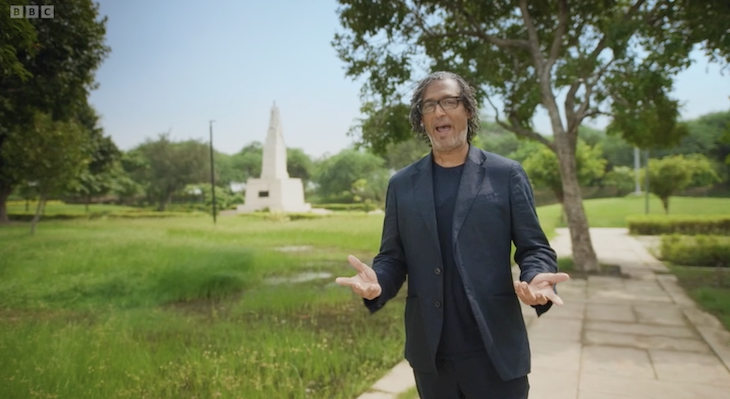The jigsaw is having a moment. Ditto other puzzles, games and brain teasers. Couples engage in post-coital sudoku (apparently). Wordle was played 4.8 billion times in 2023 (the lockdown invention of a young Welsh lad, Josh Wardle). Board game cafes have sprung up in cities.
This recent resurgence in the popularity of puzzles is partly a hangover from the Covid pandemic. Sales of jigsaws and board games soared 240 per cent during the first week of lockdown, with more puzzles being bought for adults than children. There are also wider reasons: the so-called ‘homebody economy’ and Scandi-inspired hygge lifestyle craze (think being wrapped up in blankets with a log-burning stove while your mates are on a night out). Then there’s the millennial and Gen-Z commitment to wellness and obsessive search for self-care and ‘balance’. If puzzling over the right way up for Mickey Mouse’s ears is part of that quest for good mental health who am I to argue? A box from Gibsons or Ravensburger is certainly cheaper than therapy. Jigsaw sellers also report nostalgia being big, especially for chocolate box scenes such as wintry pubs and cottages. If you aren’t the type to want a pint in a boozer, doing a jigsaw of one is apparently the next best thing.
One influencer has posted ‘Ten Expert-Level Tips’, from using baking trays to lay out the pieces to sifting them through a colander to remove the ‘puzzle dust’
As always, social media is playing a part. A study in MIT Technology Review notes that ‘social media is helping to create a community feel around what is still essentially a solitary pursuit’. Influencers share time-lapse videos of themselves completing complex jigsaws. One, called Karen (seriously), has posted ‘Ten Expert-Level Tips’, from using baking trays to lay out the pieces to sifting them through a colander to remove the ‘puzzle dust’.
They are a British invention: John Spilsbury, a London cartographer, created the first jigsaws around 1760. He mounted his maps on to wood and then cut around the countries to be reassembled by students as a teaching aid. I don’t remember ever doing those in school but maybe there are some creative teachers out there who will prescribe them as geography homework this term.
What can we learn from the jigsaw’s staying power? That absent-minded – if not totally mindless – activity can often be the most ‘mindful’. See also knitting and podding peas. But also that offline leisure time, and hard copy – physical stuff – still have appeal. Many of us continue to hold out against the Kindle, wanting well-thumbed trophies on our bookshelf. Likewise, jigsaws – now stocked by fashionable retailers such as Oliver Bonas and Anthropologie – are fast becoming collectors’ items, as fashionable to display on a coffee table as a Taschen hardback. Like the Rubik’s Cube, existing in the physical world makes a completed puzzle more impressive. Only a few weirdos do jigsaws on a digital screen.
Little wonder the Benevolent Confraternity of Dissectologists – a club for jigsaw aficionados – is going strong. The latest issue of their magazine features a review of laser-cut puzzles worldwide and an update on new hand-cutters learning their craft in the UK. Members recently had a club trip to the JHG puzzle factory in Dorset to look forward to. I love this stuff.
So what makes a good jigsaw? According to jigsaw lovers, the best-selling format is 1,000 pieces, giving hours of entertainment relatively cheaply. While jigsaws are now primarily made from cardboard, many fans caution against flimsiness. ‘Not too much annoying sky or brickwork’ is another key determinant of a favourite puzzle. Some hold precious memories: a 1950s wooden puzzle of The Princess and the Frog – without accompanying picture – had been meant as a challenging gift from one aficionado’s parents. That present was something of a forerunner of the modern ‘wasgij’ (jigsaw spelled backward) where you use your imagination to piece together the solution.
The only annoying thing about jigsaws is the risk of pieces going missing. Even more enraging than losing Old Kent Road from the Monopoly box, it leaves the whole thing fundamentally, glaringly, unfinished. Even a pack of cards with a missing Ace of Spades (a victim of being used to scoop up a living room spider at Christmas) can be replaced with a quick bit of felt-tip over the face of the joker. Not with jigsaws.
In a digital world, there is something pleasing about jigsaws’ enduring popularity. Just remember to do what the influencers do and store your pieces in the box in sandwich bags in case your tower of jigsaws has a Jenga-like fall. After all, flying off your handle after many patient hours and multiple cups of tea rather defeats the point of all that mindful puzzling.
Enjoy 30% off the Spectator's 1000-piece jigsaw puzzle in our January sale, here.








Comments